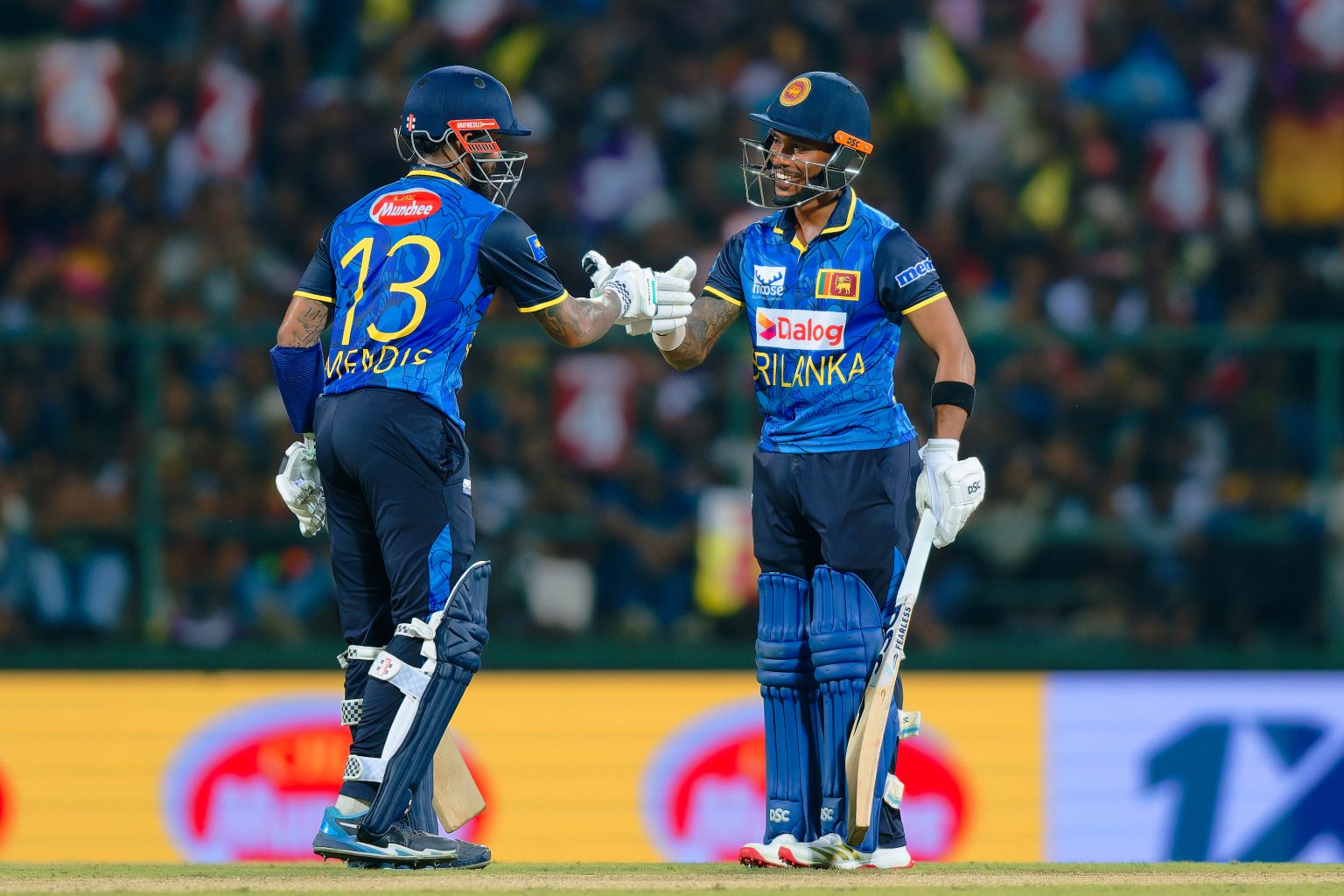Mohammad Saifuddin probably never imagined that he would have such an experience on his return to international cricket after 14 months. He started his first over by conceding three consecutive boundaries to Pathum Nissanka and gave away 14 runs. In the following over, Taskin Ahmed conceded another 16 runs thanks to Kusal Mendis.
The rampage of these two Sri Lankan openers, who came out to chase the target of 155 runs, continued until the fifth over. After such a fiery start, there was hardly anything left in the match. Rather than crediting the Bangladeshi bowlers for dragging the game into the 19th over, it would be more appropriate to attribute it to Sri Lanka’s middle order batters. With Kusal Mendis scoring 73 off 51 balls, Sri Lanka comfortably chased down the 155 run target with one over and three wickets in hand, starting the series with a seven wicket win.
The way Nissanka and Kusal batted in the powerplay during the second innings made the 155 run target look ordinary. With eight fours and five sixes, the openers put up 78 runs in just 28 balls. If Nissanka had not top edged a delivery from Mehidy Hasan Miraz and given a catch, who knows where that partnership would have ended. Still, Sri Lanka scored 83 runs in the powerplay, their highest ever in T20 internationals. To stop the Nissanka Kusal storm, captain Litton kept changing bowlers continuously.
He used five different bowlers in the first seven overs. But that did not bother the two Lankan openers at all. Taskin, Tanzim, Saifuddin — none of them could stop the onslaught. In the third over, Tanzim Sakib gave away 16 runs, and one over later Taskin returned only to be struck hard by Kusal again. That over went for 18 runs with two sixes and a four. As the second change bowler, Miraz also began his spell by getting hit for two sixes by Nissanka. However, on the very next ball after the second six, he managed to dismiss him.
After that, Sri Lanka’s run rate slowed down a bit, mostly because Kusal Perera, who came in at number three, played with some caution. The two Kusals combined to score 42 runs off 49 balls in the second wicket partnership, which was somewhat surprising. During that slower phase, leg spinner Rishad Hossain picked up the wicket of Kusal Perera with a brilliant googly in his second over. On a day when most bowlers were hammered, Rishad left the field with the most economical figures, conceding only 24 runs in four overs.
Earlier, after losing the toss and being sent in to bat, Bangladesh had a decent start, but aimless batting from the middle order limited them to a modest total of 154 for five. Parvez Emon scored 38 off 22 balls but gifted his wicket to Maheesh Theekshana. Before that, fellow opener Tanzid Tamim gave Theekshana catching practice and got out for 16 while facing Nuwan Thushara.
Litton, who failed once again, was out for six trying to sweep Jeffrey Vandersay and was trapped leg before. Towhid Hridoy fell into the trap of Dasun Shanaka’s slower delivery outside the off stump and was caught behind after scoring 10 runs under pressure from dot balls.
There could be discussions about how useful Naeem Sheikh’s ODI style batting was in his return to T20s after three years. He seemed to struggle at the crease and could not adapt to the variation in pace. However, he did put together a 46 run partnership with Miraz. In the end, Shamim’s 14 off five balls helped Bangladesh cross the 150 run mark.


